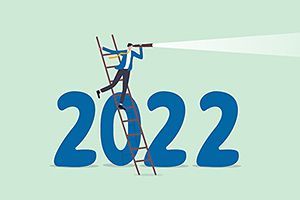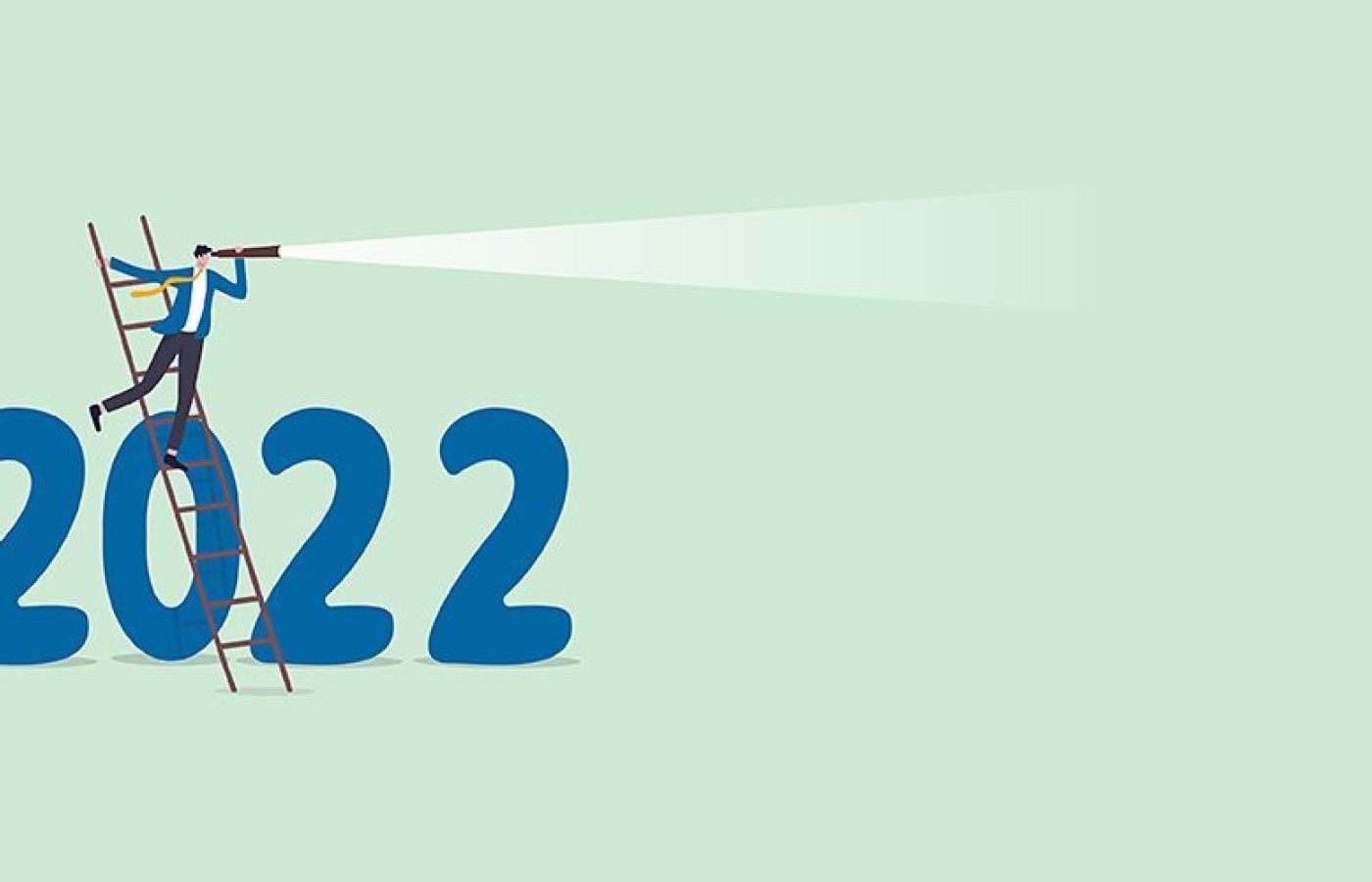Recent laws in New Jersey and California represent a disturbing trend that will negatively impact a practice’s ability to collect monies from patients, as well as expose them to significant penalties if the practice does not follow the mandatory guidelines to a T. Please be aware that a similar law may be coming to your state. The time to act is before the law is passed.
Trends 2022: Your Recipe for Success
Trend: "A general development or change in a situation or in the way that people are behaving."
Fad: "A fashion that is taken up with great enthusiasm for a brief period."
What's trending? The following are based on what I see on a daily basis with my patients, in my office; and from talking to you, my friends around the country. These are Jeffrey Tucker's Trends 2022.
Trending: Health Optimization
Be the doctor who can help patients figure out how to dial-in, tweak, tune, and refine methods to improve and optimize their health. That starts by getting good at understanding and teaching every patient how inflammation relates to their health and wellness. Pain is still the No. 1 reason people come to us, but a close second is that people want to optimize health and performance, s-l-o-w down the aging process, create a youthful future, and increase longevity (or die trying). Inflammation impacts all of that and more.
Trending: Precision and Resilience

Look at offering not only personalized, but also "precision" health care. Continue developing strong skills to communicate a plan of care, keep patients engaged to maintain health, optimize performance and resiliency, while minimizing the risk of illness.
Chiropractic and hands-on therapy continue trending in 2022. However, I recommend developing a biohacking skill set to help Mother Nature heal better and faster, and make patients more "resilient." Use these questions to help reveal and address patients' unstated goals: Do you want to lose weight? Do you want to perform better cognitively? Are you at risk of diabetes, cardiovascular disease or arthritis? Is it moods or ED? What is your aging health fear?
For some patients, I need to focus on range of motion and movement; others need recovery and sleep hacks. For others, stress management and the use of complementary modalities may be called for. Population-based recommendations on exercise and diet, etc., sound like this: "Eat a Mediterranean or ketogenic diet; exercise 150 minutes per week."
When I have a conversation with a patient, my plan needs to feel far more "precise and personalized." For example, I try to answer what to eat based on trending off-the-shelf testing (e.g., genetics, stool, glucose, keto samples); when to eat; what type of exercise is best for them; even which supplements are going to be helpful – on top of other hacks we should consider: sleep, meditation, breath work, ergonomics, etc.
Patients want personal care and they are more willing to work at it with you if you can help guide them. Offer to help patients make healthy changes to be better than their normal; and help them be accountable, without having them feel bad or wrong if they stall or fall off.
For example, if they need to lose 30 pounds, break it down into a 12-week program. Twelve weeks seems to be a number patients are comfortable with for weight (fat) loss, muscle gains, flexibility changes, glucose optimization, and cholesterol optimization (but not pain relief).
Trending: Finding Solutions (Even If They're Someone Else's)
Don't be afraid to ask in front of patients, "What are we missing here? What are the underlying causes behind (name condition)?" Be the kind of doctor who is able to offer different approaches when one approach doesn't work. Doctors who are succeeding know how to create a team approach.
Be honest! If your approach isn't working, help the patient find the right practitioner who can help them.; or better yet, offer multiple approaches (e.g., weight loss, new therapies such as TECAR, laser, shockwave, lymph treatments) in your office! The trend is offering science-based choices patients did not know they had and helping them make the right decisions.
This might be as simple as a weight-loss program. Other scenarios may be referring to another practitioner who offers IV vitamin drips, PRP or stem injections, a new device or technology; or yes, even a consult for other types of hands-on therapy than what you do.
Trending: Self-Care
"Sick care" medicine has gotten so expensive, and people are increasingly aware of awful side effects from medications and surgeries. COVID 19 has turned the immune system and better ways to achieve self-care into a fad, but it's better than not having it on the radar at all. But even bigger (and more exciting to me) is that the lifespan and longevity mentality is really taking hold (trend).
COVID made us take our eye off the future health ball. Alzheimer's and dementia is a health care disaster ahead (trend). Now circle back to what I said about inflammation resolution. Chronic inflammation is tied to several diseases, including inflammatory bowel disease, cancer and Alzheimer's disease. Your children could live to be 120 years old; but will they remember one another?
The doctor "guide" includes helping people understand themselves deeply – this starts with looking at their life. My favorite question is, "What do you want your life to look like?" How do you think most people answer? I find the top answer is work-life balance, less stress and family values!
No wonder why outdoor activities, meditation, yoga and tai chi continue as top trends. Ask patients to begin meditation with just one minute a day; the next day, two minutes; and so on. Track the number of days a patient can meditate or do any new movement/physical activity: hold a Brugger pose or one-leg-stand pose for as many seconds as they can while focusing on nasal breathing, etc. Create a game or challenge ("gamification" is still trending) to accumulate the number of minutes they do each day. It becomes meaningful!
Trending: Digital Health
Continuing in the top trends are health apps, especially for engagement, planning, physical movement, exercise, sleep data (REM, deep sleep, resting heart rate, heart rate variability), food choices, and overall recovery and readiness balance.
Look for new watch features that track BP and temperature (for fertility planning). Gadgets can help regulate heat or cold (in the bed and the bedroom itself) for better sleep; and even provide real-time blood glucose levels. Athletes are not the only ones anymore measuring oxygen, glucose and even impaired production of adenosine triphosphate (ATP).
Biohacks that influence metabolism and create stress such as hypoxia (various altitude training), hyperbaric chambers, and ischemia (blood flow restriction devices) are also on my biohacking list.
A long time ago, we, chiropractic, was known as the wholistic profession. Our approach back then is the trend today. Back then, there was never enough research or digital health happening on this subject, but now there is. We had muscle testing back then; today, devices, gadgets, technology, and science better objectify what's happening on a molecular and cellular level - i.e., mitochondria, gut microbiome, oxygen and fitness. We live in a digital transformation with data-driven health care.
Trending: E-Commerce
I'm using fad and trending off-the-shelf gut microbiome testing, simple finger pinprick blood tests, and in-office nitric oxide testing, zinc testing, blood pressure, oxymeter testing, body composition analysis testing, etc. Testing acts as incentive and motivates people to get started, but it's often not meaningful enough to see them through to the finish unless we test again and again.
I don't want patients to drop out of care. If they drop out, it's usually because of money, or because they didn't find meaningful results or incentive to keep going. Change the mindset to one where patients internalize the benefits. Just look at what genetic testing has done for patients' health profiles.
Patients like my DrJeffreyTucker.com "shop" and that I offer ways to measure microbial agents in the gut related to environmental mold and toxic chemical contents in their home. I've vetted supplements, topical creams, devices for light therapy, sound therapy, etc.
Keep Patients on Their Path – and Catch Them When They Fall
The trend that encompasses all of the above is that patients want to make healthy (or at least healthier) choices. That not only means I support them in these efforts; it means if they fall, I am there to catch them and redirect them to their "North star." In 2022, be the doctor who creates a plan and provides programs that will help every patient achieve their goals.



